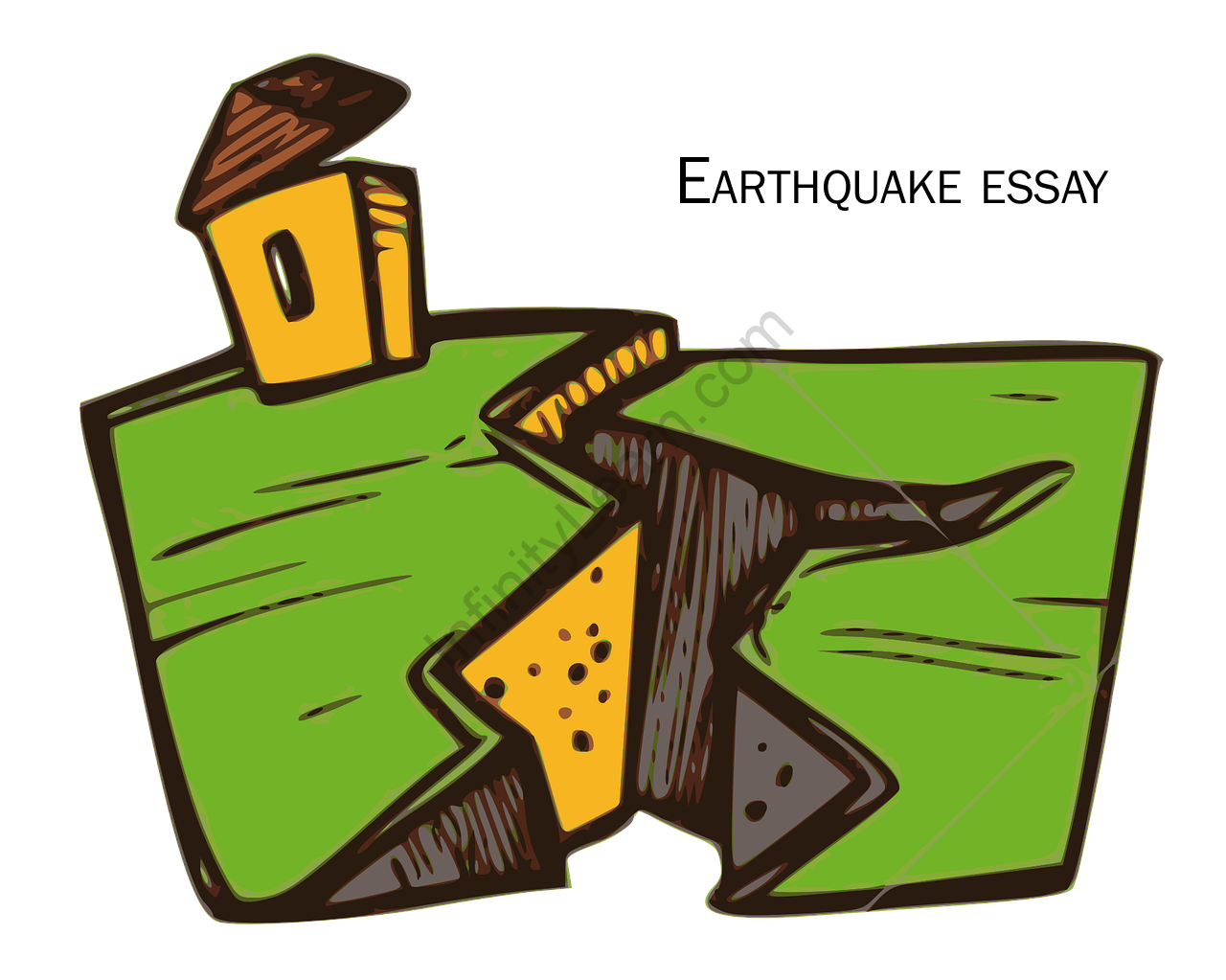Table of Contents
An earthquake is a natural disaster like a flood, tsunami, storm, volcanic eruption, etc. These are disasters that result from the natural processes of Earth. The term ‘quake’ means to shake or tremble. Hence, earthquake means the shaking or trembling of Earth. It happens when the Earth abruptly releases its accumulated stress and causes the sudden motion of a part of the surface of the planet. While major earthquakes are not common, they are known to cause more damage to life and property than other natural disasters. In this earthquake essay, we will discuss the types and effects of earthquakes.

Introducing the earthquake essay
Since an earthquake is the shaking of the Earth, there are various factors – natural and man-made, that can result in an earthquake. However, most earthquakes are due to a shift in the tectonic plates. While most of us know about the surface of Earth and space, very few are aware of what lies beneath our feet. Let’s look at the interior of Earth to understand earthquakes.
Earth’s Interior
The interior of Earth has four layers – three solid and one liquid.
- The deepest layer is a solid iron ball with a diameter of around 2400 kilometers.
- The next layer is a shell of liquid iron. This is around 2300 kilometers thick and creates the planet’s magnetic field.
- Above it is the layer called mantle. While this layer is purely made of rock, the temperature is so high that the rock flows under pressure. This is around 2900 kilometers thick.
- Crust is the outermost layer. It is around 8-40 kilometers thick.
To understand earthquakes, one needs to understand the lithosphere and tectonic plates. The lithosphere is composed on the Crust and a portion of the Upper Mantle. It has large pieces called tectonic plates. Each plate is around 100 kilometers thick. These plates have been constantly moving since about 3.4 billion years ago. There are around 7-8 major plates and several minor plates. This movement helps form mountains and ocean trenches and also causes volcanic eruptions and earthquakes.
Types of earthquakes
There are four broad categories of earthquakes – tectonic, volcanic, explosive, and collapse earthquakes.
Tectonic Earthquakes
These earthquakes are caused due to the uneven movement of the tectonic plates. When the tectonic plates move, they merge with each other or separate based on the conditions around them. At such times, if the merger or separation is not smooth, then energy is released in the form of seismic waves. This results in a tectonic earthquake.
Volcanic Earthquakes
Sometimes, a volcanic eruption can result in an earthquake. While volcanic earthquakes are of a minor magnitude, they can cause a lot of damage since they follow a volcanic eruption. There are two ways in which a volcanic eruption causes an earthquake:
- The withdrawal of the magma causes the Earth to tremble. This is called the Volcano-Tectonic earthquake.
- The eruption results in a change in the pressure among the layers of Earth causing earthquakes over a long time. This is called Long-Period earthquake.
Collapse Earthquakes
These occur in mines and caverns. Usually, mining companies do underground blasts to extract ore and metals. These blasts can result in the collapse of a mine and lead to an earthquake.
Explosive Earthquakes
When we test nuclear weapons, while we ensure that the site does not have any human inhabitation, the blast impacts the Earth. These blasts result in Explosive earthquakes.
Measuring and Predicting earthquakes
The primary instrument used to measure earthquakes is a seismograph. It produces a graphic recording of the movement of the ground that is caused by the seismic waves. While the Richter scale was used as the primary magnitude scale for earthquakes, it had certain limitations. Hence, most experts use the Moment Magnitude Scale for comparing quake sizes. The Richter Scale now finds application for forecasting earthquakes.
Summing Up the earthquake essay
There are many instances of devastating earthquakes in history. The most powerful earthquake in recorded history was the Valdivia Earthquake in 1960. It is also called the Great Chilean Earthquake. Its magnitude was 9.5 and lasted for around 10 minutes. It also triggered a tsunami with waves up to 82 feet. Other major earthquakes in history were the Great Alaska Earthquake (9.2) in 1964, Sumatra Earthquake (9.1) in 2004, Tohuku Earthquake (9.1) in 2011, Kamchatka, Russia Earthquake (9.0) in 1952, and Maule(Chile) Earthquake (8.8) in 2010.
FAQs on the earthquake essay
Q1. When was the last earthquake in Riverside CA?
The last earthquake in Riverside, CA occurred on February 14, 2022 at 4.01 pm.
Q2. What causes an earthquake?
A tectonic earthquake occurs when the movement of tectonic plates results in the release of the built-up pressure. Volcanic earthquakes are a result of a volcanic eruption. Also, Collapse earthquakes are caused due to the collapse of mines and Explosive earthquakes result from a nuclear testing explosion.
Q3. Did we just have an earthquake in Bakersfield?
There were no confirmed earthquakes in Bakersfield in the past 24 hours.
Q4. When was the last earthquake in the world?
The last earthquake in the world occurred at 2.13 pm IST on February 15, 2022. Its magnitude was 3.2.







